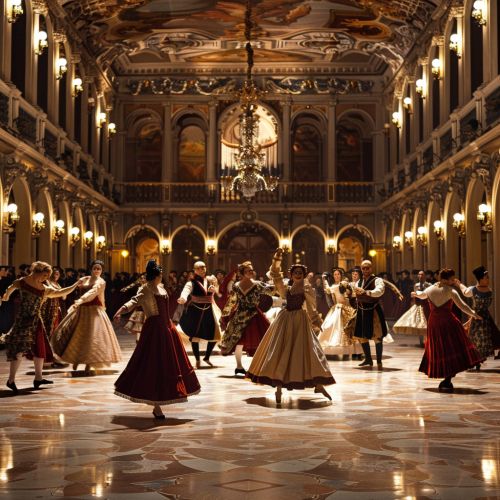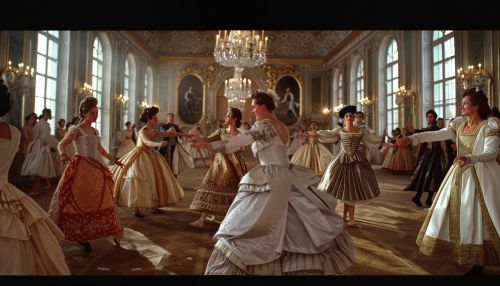Court dance
History
Court dance, also known as courtly dance, is a genre of dance performed in royal courts during formal occasions and events. The tradition of court dance dates back to the Middle Ages, where it was a significant part of courtly life and culture. Court dance was not only a form of entertainment but also a display of social status, etiquette, and political alliances.


Types of Court Dances
There are several types of court dances, each with its unique style, rhythm, and movements. Some of the most notable court dances include:
Minuet
The minuet, originating from France in the 17th century, is a slow and stately dance performed in triple time. It was a popular court dance during the reign of Louis XIV and was often performed at his court in Versailles.
Gavotte
The gavotte is another French court dance that was popular during the Baroque period. It is typically performed in 4/4 time and is characterized by its distinct rhythm and pattern of steps.
Allemande
The allemande is a German court dance that was popular during the Renaissance and Baroque periods. It is typically performed in a moderate tempo and is characterized by its smooth, flowing movements.
Pavane
The pavane is a slow processional dance that was popular during the 16th and 17th centuries. It originated in Italy but gained popularity in other European courts, particularly in Spain and France.
Role in Society
Court dances played a significant role in society, particularly in the context of royal courts. They were often used as a means of displaying social status, as the ability to perform these dances was seen as a sign of refinement and sophistication. Court dances were also used as a form of diplomatic tool, as they were often performed during state occasions and diplomatic visits.
Evolution of Court Dance
Over time, court dances evolved and adapted to changing societal norms and tastes. During the 18th century, the minuet was gradually replaced by the waltz, a more lively and less formal dance. Similarly, the gavotte and allemande fell out of favor and were replaced by other dances. Despite these changes, the tradition of court dance has endured and continues to be a significant part of cultural heritage and historical reenactments.
Modern Interpretations
In the modern era, court dances have been adapted for stage performances and are often featured in ballet and other forms of theatrical dance. Choreographers have reinterpreted these dances, infusing them with modern sensibilities while still retaining their historical and cultural significance.
